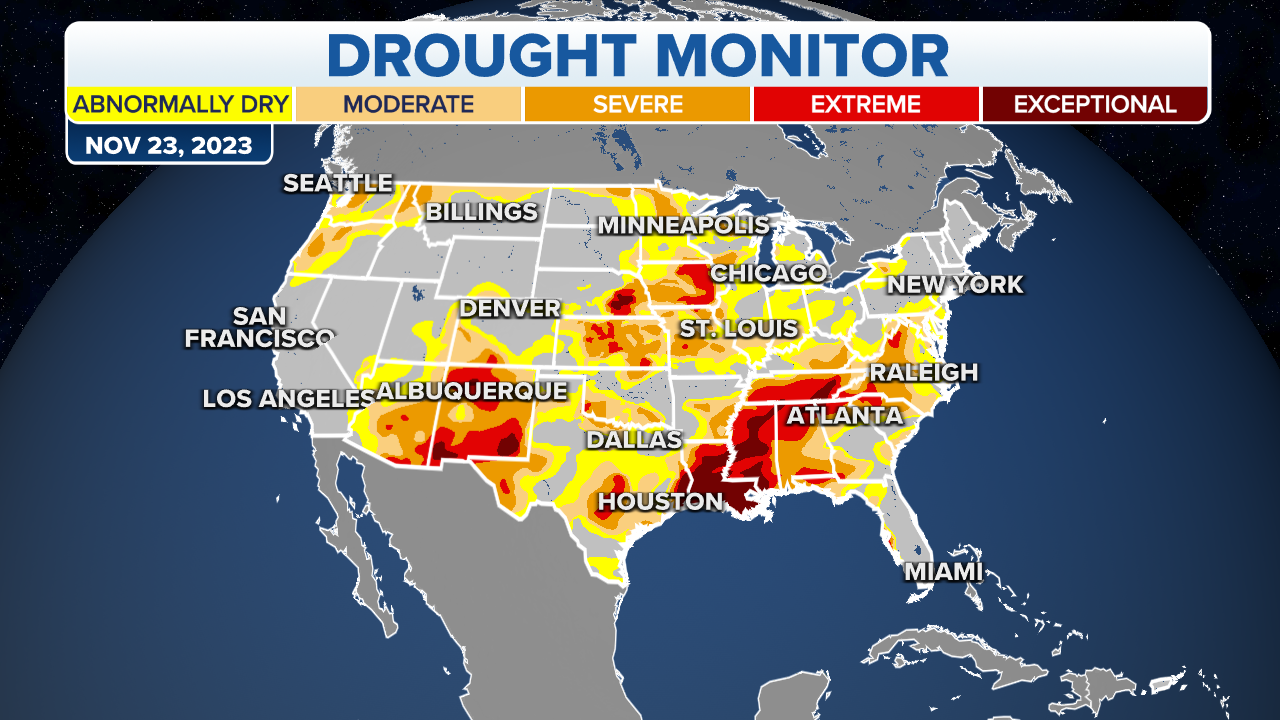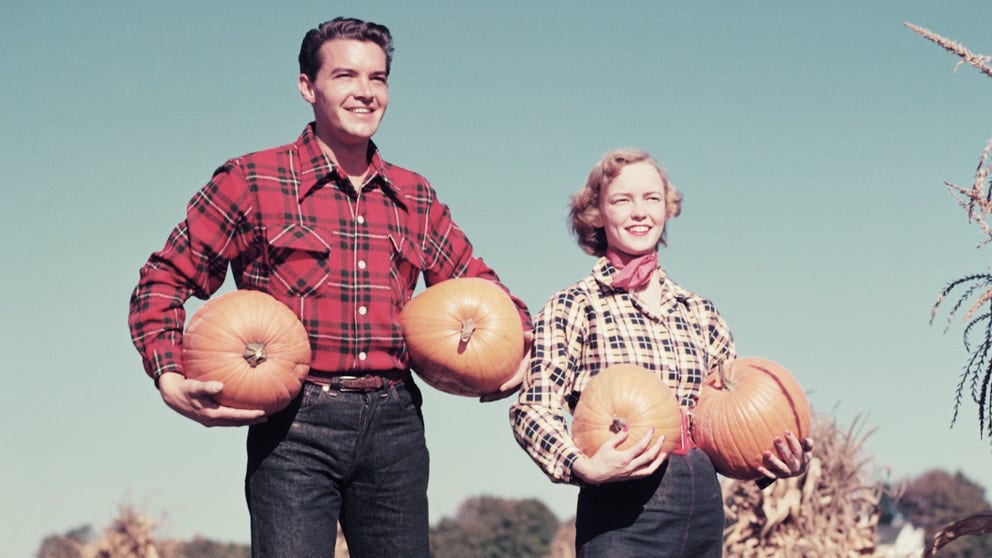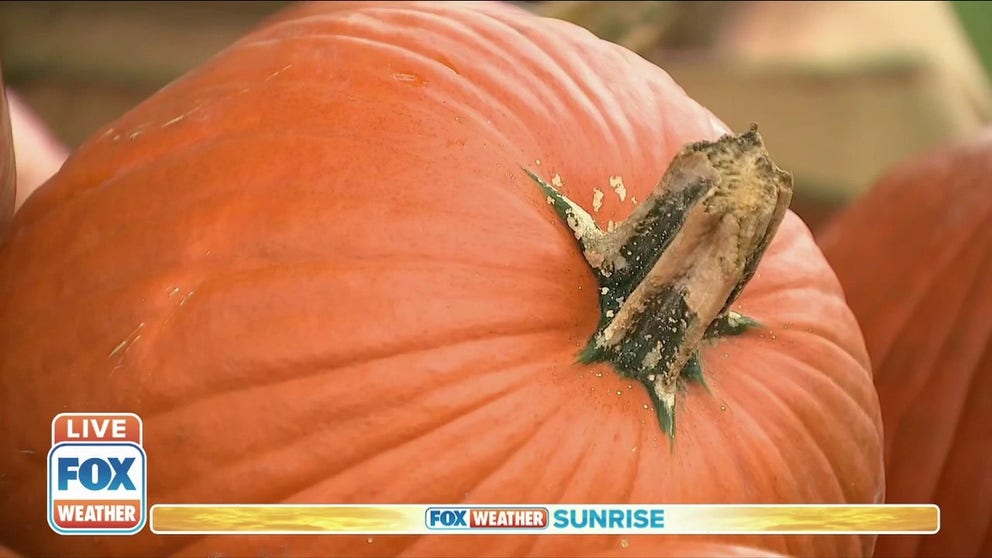Pumpkin fall outlook: How the season’s harvest has withstood weather extremes
The average weight of a pumpkin is 13 pounds, but some can weigh thousands of pounds
How the humble pumpkin became an American icon
From a vegetable of necessity to an edible icon, learn how the humble pumpkin experienced a dramatic transformation in American culture.
CHICAGO – A poor pumpkin harvest appears not to be in the cards this fall season because of what farmers believe is an acceptable range of weather extremes during the crucial growing period.
Pumpkins are typically planted in the late spring and early summer and harvested during the fall in growing regions across the country that stretch from the Northeast to the West Coast.
Illinois is the largest pumpkin producer, generating over 40 percent of the country’s crop as part of the over billion-dollar commodity.
Agriculturalists credit the rich soil as well as generally warmer weather and slightly drier conditions in the Prairie State for the positive-looking year.

"Overall, it’s a pretty good season. At a state fair, some of my farmers were showing me pumpkins that were a couple of hundred pounds. Now, there are patchy areas that received a lot a rain. Those areas that had a bit more rain might have lower yields. But overall, we are looking at a pretty good pumpkin season this year," said Raghela Scavuzzo, executive director of the Illinois Specialty Growers Association.
HALLOWEEN CANDY SHORTAGE? CHOCOLATE MAKE CREATES SCARE
Scavuzzo said the crop is highly susceptible to extreme temperatures and rain, which have both been hard to come by. Too much precipitation can cause rotting and even disease. On the opposite side of the spectrum, a severe lack of rainfall can lead to smaller pumpkins.
The Illinois Specialty Growers Association said the state produces massive gourds for both processing and ornamental uses. Typically processed pumpkins are canned and used for various pastries, including pumpkin pie and donuts. Ornamental pumpkins are typically carved into jack-o-lanterns and decorate front porches.
"Eighty percent of Illinois pumpkin production is for processing, and around 20 percent are designated for ornamental uses. The ornamental pumpkin operations are the ones that allow people to come out and pick your own pumpkin," Scavuzzo said.
The classic favorite is known as the Howden, which is typically bright orange and has a stem that resembles a handle.
HOW THE HUMBLE PUMPKIN BECAME A FALL FAVORITE
Other top performing states are usually California, Indiana, Michigan, Texas and Virginia. The United States Department of Agriculture reports producers in these states are responsible for more than a billion pounds of the favorite fall fruit.
Agricultural experts believe if one of the regions is having an off season, there should still be plenty of pumpkins that will fill grocery stores and leave the front stoops of America less barren.
"If you go and buy a bunch now, you will create a short supply while we’re processing the others, which would increase pricing. But if you buy at your regular rate and time, you should see plenty of supplies. So, if we don’t create a shortage, we’ll be okay," Scavuzzo said.
If you must buy your pumpkin early, agricultural specialists advise you to refrain from carving the massive gourd until closer to the October 31 holiday.
Utah State’s agricultural extension office has some suggested methods to help prolong the life of your jack-o-lantern.
- Wash pumpkin before cutting into it
- Remove insides to reduce area where fungi can grow
- Coat the pumpkin with a 10 percent bleach solution after carving to kill microorganisms
- Use petroleum jelly around cuts to slow drying process
Scientist's detection of water mold might have saved pumpkin pie this Thanksgiving
Availability of the popular pumpkin pie filling might have been saved this year after an Illinois crop scientist discovered a known water mold that could have wiped out the nation's largest pumpkin producer.

